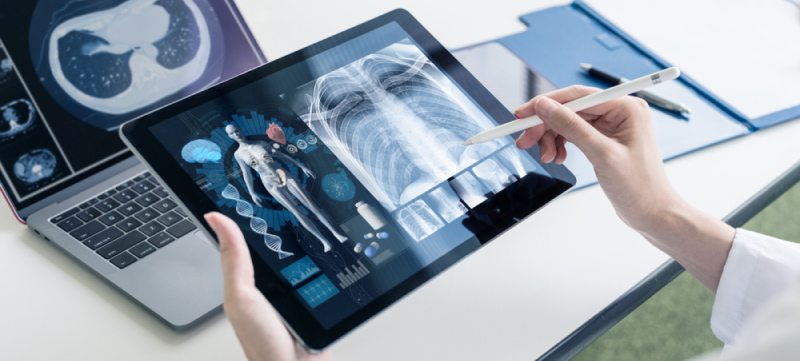In recent years, wireless patient monitoring devices have become one of the most exciting advancements in healthcare. These devices allow healthcare providers to track a patient’s health remotely, making it easier to detect changes in their condition without the need for constant in-person visits. This shift in how we monitor patients is revolutionizing healthcare systems worldwide. In this article, we’ll explore why wireless patient monitoring devices are considered a healthcare gamechanger.
1. Continuous Monitoring for Better Health Insights
Traditionally, patients had to visit hospitals or clinics for regular check-ups, which often meant limited monitoring of their health between visits. Wireless patient monitoring devices have changed this by enabling continuous monitoring. These devices track critical health metrics like heart rate, blood pressure, glucose levels, and oxygen saturation throughout the day.
For instance, devices like the iHealth Blood Pressure Monitor and Dexcom Continuous Glucose Monitoring system continuously transmit data to healthcare providers, providing a constant stream of information. This allows doctors to monitor their patients’ conditions in real-time and make quick adjustments to their treatment plans, if necessary.
2. Improved Patient Comfort and Convenience
One of the biggest advantages of wireless patient monitoring devices is the comfort and convenience they offer. Patients no longer need to visit a hospital or clinic for routine monitoring. Instead, they can use portable, easy-to-use devices in the comfort of their own home. This is especially helpful for patients with chronic conditions who require frequent check-ups.
For example, wireless pulse oximeters let patients track their blood oxygen levels from home. Similarly, wearable devices like smartwatches and fitness trackers allow individuals to monitor vital signs like heart rate and sleep patterns without interrupting their daily routine.
3. Early Detection of Health Issues
Early detection is critical to improving patient outcomes. Wireless patient monitoring devices make it easier to catch potential health issues before they become serious. By constantly tracking vital signs, these devices can identify irregularities or changes that might go unnoticed in a routine visit.
For instance, wearable ECG monitors can detect early signs of heart arrhythmias, allowing healthcare providers to intervene before a more severe condition develops. This can ultimately save lives and reduce the need for emergency interventions.

4. Enhanced Remote Care
As healthcare becomes more patient-centered, remote care is gaining traction. Wireless patient monitoring devices play a vital role in facilitating this transition. With these devices, doctors can monitor patients without requiring them to leave their homes.
This is particularly useful for patients in rural or underserved areas who might not have easy access to healthcare facilities. With the help of wireless monitoring, these patients can receive quality care without needing to travel long distances for appointments.
Moreover, patients who are recovering from surgery or undergoing long-term treatment can benefit from being monitored remotely. This ensures that healthcare providers can track recovery progress and intervene early if complications arise.
5. Reducing Hospital Visits and Costs
One of the significant challenges facing healthcare systems today is the rising cost of hospital visits and treatments. Wireless patient monitoring devices can help reduce the need for frequent hospital visits, lowering overall healthcare costs.
By monitoring patients remotely, healthcare providers can identify potential issues before they require hospitalization, preventing costly emergency room visits. This also eases the burden on hospitals and clinics, allowing them to allocate resources more efficiently.
Additionally, patients avoid the cost and inconvenience of frequent hospital visits, leading to a more cost-effective and streamlined care process.
6. Real-Time Alerts and Faster Response Times
Wireless patient monitoring devices can send real-time alerts to both patients and healthcare providers when something goes wrong. These alerts can be triggered by changes in vital signs such as an abnormal heart rate, low oxygen levels, or high blood pressure. This instant communication allows for quicker responses to critical issues.
For instance, if a patient’s blood pressure spikes, a wearable monitor can immediately alert both the patient and their doctor, allowing the doctor to assess the situation and adjust treatment before it escalates into an emergency.
This real-time data exchange reduces the time it takes for patients to receive help, which is crucial in critical care situations.
7. Integration with Health Records
Many wireless patient monitoring devices integrate with electronic health records (EHR), providing a seamless flow of patient data to healthcare providers. This integration ensures that all health data is stored in one place, making it easier for doctors to track changes and collaborate on patient care.
For example, data from a wireless heart monitor can automatically be uploaded to a patient’s health record, giving doctors up-to-date information to make informed decisions. This integration also reduces the risk of errors that can occur when transferring data manually.
8. The Future of Wireless Patient Monitoring Devices
The future of wireless patient monitoring devices looks bright. As technology continues to advance, we can expect even more sophisticated devices that offer better accuracy, additional features, and greater ease of use.
In the coming years, we may see devices capable of monitoring more complex health metrics like brain activity or even early signs of cancer. AI and machine learning will also play a larger role in analyzing data from these devices, providing even more personalized insights and predictive care.
Final Thoughts
Wireless patient monitoring devices are undoubtedly a gamechanger in healthcare. They offer continuous monitoring, early detection of health issues, improved patient comfort, and reduced hospital visits. As technology continues to evolve, these devices will only become more advanced, transforming the way healthcare is delivered worldwide.
For patients, this means better care, greater convenience, and the ability to stay on top of their health in real-time. For healthcare providers, it means more efficient care and better patient outcomes. Wireless patient monitoring is truly changing the face of healthcare.
